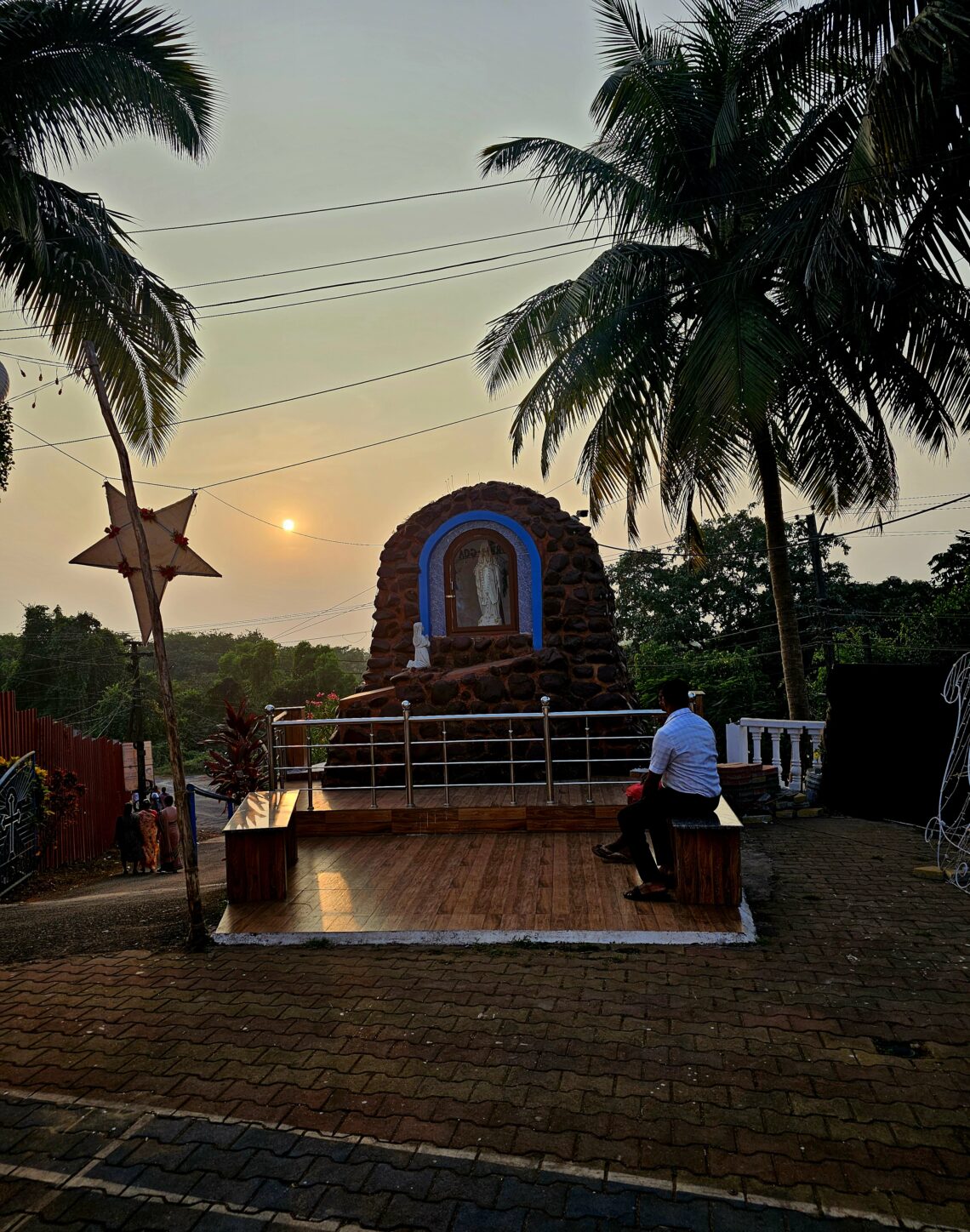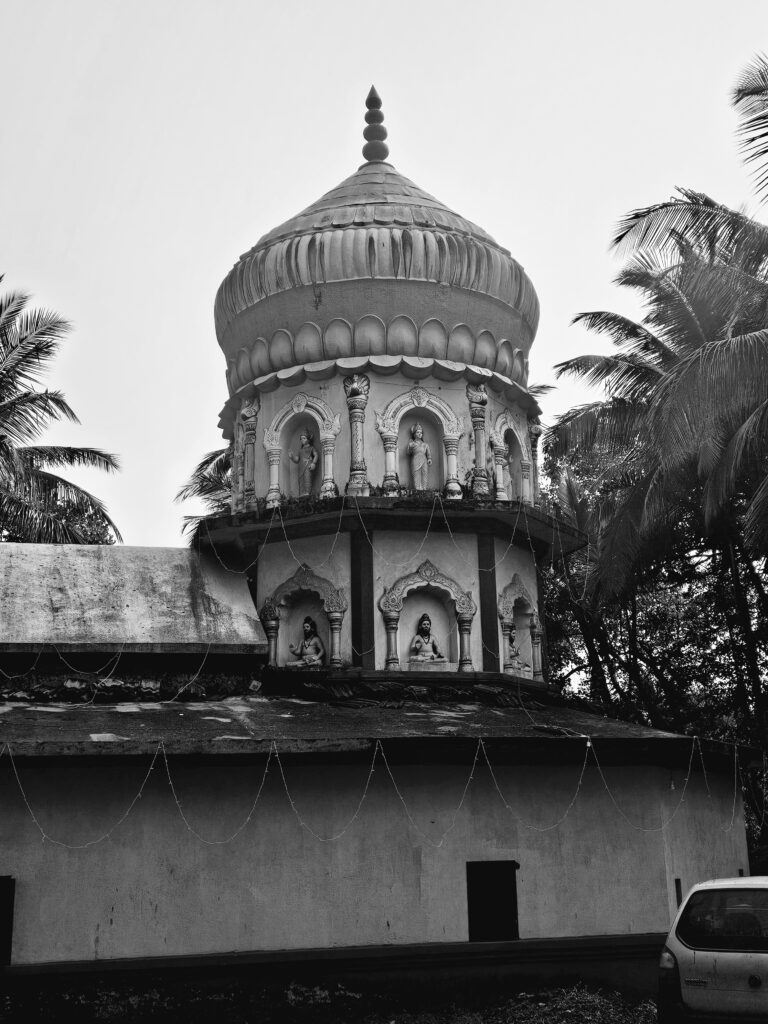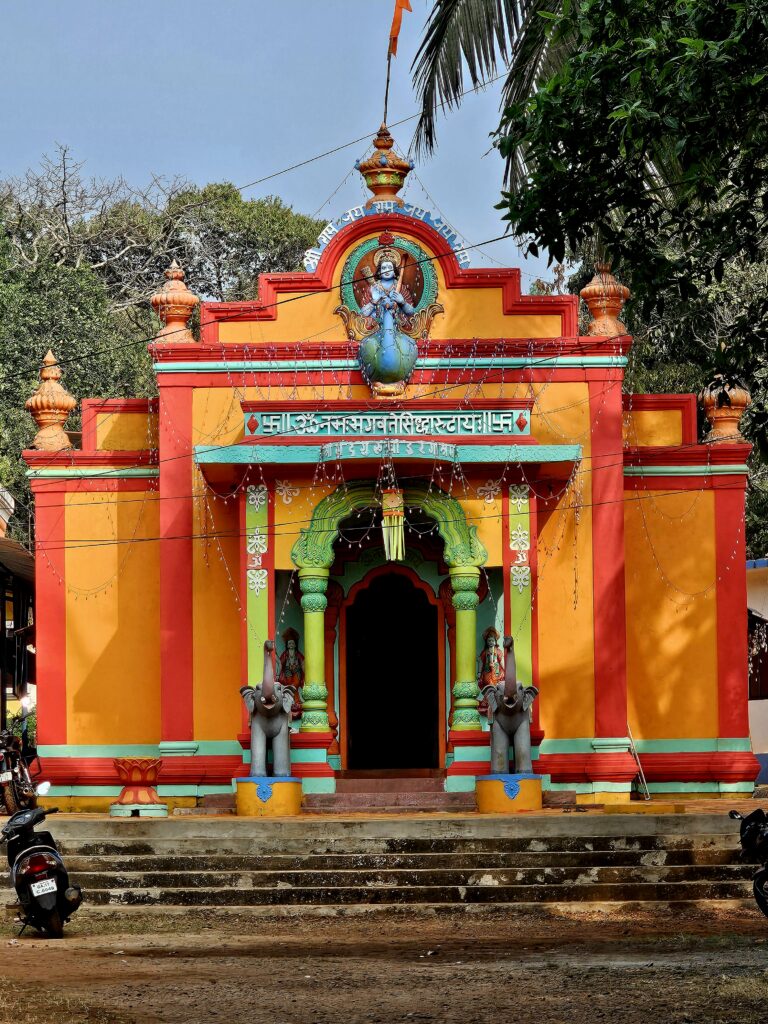
Les habits du dimanche – 2nd part (Kathy – Arambol – January 2024)
English version below/ Version en français plus bas
गोंयाच्या कॅथोलिक चर्चेची पारंपरिक पाठशाला, पाच सहस्र वर्षांनीतरही, राज्यातील आध्यात्मिक आणि सांस्कृतिक जीवनात महत्त्वाची भूमिका आडवत आहे. हे पोर्चुगीज कोलोनियल वारसाचे साक्षात्कार करते, ज्याने भारताच्या हे सुंदर क्षेत्रावर अपार चिन्हे ठेवलेले आहे.
हेजेल रोज सकाळी सातवेळा मस्सेसाठी जाते. तिचे साक्षात्कार सांगताना, तिच्या उत्तेजनेनुसार, तिच्या देवाशी एक गहन संबंध आहे आणि तिच्या दिवसाचे सुंदर आणि आध्यात्मिक आधार वाचवण्यासाठी तिची आवड आहे, मला सांगते.
ती साक्षात्कारात गूंगेलेंड होती की मला इंग्लिशमध्ये थोडक्यात मस्सेसाठी साक्षात्कार केला जातो आहे. ती मला सांगते की प्राधिकृती काहीतरी एकदिवसीयांतर तिचं भाषण बदलू शकतं. इतरथी, मस्सेस कोंकणीत घेतली जाते (इंडियातील २२ अधिकृत भाषांपैकी एक).
हेजेल, जो गोंयाची मुलगी आहे परंतु मुंबईत वाढलेली आणि ३० वर्षे दिल्लीत राहून, हिंदी आणि इंग्लिशमध्ये अधिक दक्ष आहे, हाती कोंकणीतल्या आवाजात पूर्ण करतात. रोमन कॅथोलिक कुटुंबातून आलेली, तिचं तीन मुलगं आहे ज्यांनी कॅथोलिक विश्वासानुसार तिचं पालन केलं. माझ्या विचारात, इथे, मुलगं मातेच्या धर्मातून कधीकधी किंवा किंवा मुकवास येतं का, ही तिचं प्रतिष्ठानंतर म्हणते, काहीतरी प्रॉटेस्टंट पाद्रींक अनुसरण करायला प्राथमिकपणे किंवा संतानं असे कसं प्रतिसाधून घेतले.
माझं प्रश्न सुधारून आणि कसं सुधारून म्हणजे किंवा कसं मुकलं आणि अन्याय असंख्य प्रश्नं केलं. भारतात असलेलं एक सोबती आणि मुकवाच असेलेलं धर्माचं काय कारण आहे? कसं ते, ज्यांनी त्यांनी त्यांच्यावर कसं सुटलं आहे? हे एक उदार चरित्र आहे का? विचारांचं स्थान.

The Catholic Church in Goa continues, even five centuries later, to play an essential role in the spiritual and cultural life of the region, bearing witness to the Portuguese colonial heritage that has left an indelible mark on this picturesque corner of India.
Hazel attends mass every morning, seven days a week. She shares with me that from the moment she wakes up, she feels a deep connection with God and has a vital need to go to church to meet Him, much like visiting a friend, she explains.
If she misses the service, it’s as if she remains unsatisfied a little like being hungry and having no food, as if something essential is lacking, the foundations of a beautiful day.
I point out that I had the opportunity to hear a brief excerpt of the mass in English. She tells me that the priest sometimes adjusts his discourse based on the congregation. Otherwise, the mass is conducted in Konkani (for your information: one of the 22 official languages spoken in India).
Hazel, originally from Goa but having grown up in Mumbai and lived in Delhi for 30 years, is more proficient in Hindi and English, although she manages in Konkani. Coming from a Roman Catholic family, she has three daughters who also follow the Catholic faith. When I ask her if, here, children sometimes detach from their parents’ religion, she answers affirmatively, explaining that some prefer to follow Protestant pastors.
I correct my question and inquire whether some completely abandon all religious practices. She informs me that less than 2% of the population in Goa declares themselves agnostic. She adds that this is often under the influence of Russians, foreigners, or Indians who succumb to alcohol and drugs (I quote).
She concludes by saying that if everyone were connected to the Divine, it would be a wonderful world because the Divine is one. It’s not your god, nor mine, nor theirs. It’s the Divine.
At this point, I find myself pondering a myriad of questions. What sustains such religious fervor in India? What about those who detach themselves? Is it an open debate? Food for thought.

L’église catholique à Goa continue, même cinq siècles après, de jouer un rôle essentiel dans la vie spirituelle et culturelle de la région, témoignant de l’héritage colonial portugais qui a laissé une empreinte indélébile sur ce coin pittoresque de l’Inde.
Hazel assiste à la messe tous les matins, sept jours sur sept. Elle partage avec moi que dès son réveil, elle ressent un lien profond avec Dieu et éprouve le besoin vital de se rendre à l’église pour le rencontrer, un peu comme on va rendre visite à un ami, explique-t-elle.
Si elle manque l’office, c’est comme si elle restait sur sa faim, comme si quelque chose d’essentiel lui manquait, les fondements d’une belle journée.
Je lui fais remarquer que j’ai eu la chance d’entendre un court extrait de la messe en anglais. Elle me dit que le prêtre adapte parfois son discours en fonction de l’assistance. Sinon, la messe est dite en konkani (pour info : l’une des 22 langues officielles parlées en Inde).
Hazel, originaire de Goa mais ayant grandi à Mumbai et vécu 30 ans à Delhi, maîtrise mieux le hindi et l’anglais, bien qu’elle se débrouille en konkani. Issue d’une famille catholique romaine, elle a trois filles qui suivent également la foi catholique. Lorsque je lui demande si, ici, les enfants se détachent parfois de la religion de leurs parents, elle répond affirmativement, expliquant que certains préfèrent parfois suivre les pasteurs protestants.
Je rectifie ma question et demande si certains abandonnent complètement toute pratique religieuse. Elle m’apprend que moins de 2% de la population de Goa se déclare agnostique. Elle ajoute que cela est souvent sous l’influence des Russes, des étrangers ou des Indiens qui tombent dans l’alcool et la drogue (je cite).
Elle conclut en disant que si tout le monde était connecté au Divin, ce serait un monde merveilleux, car le Divin ne forme qu’un. Ce n’est ni ton dieu, ni le mien, ni le leur. C’est le Divin.
À ce stade, je me pose un tas de questions. Qu’est-ce qui maintient une telle ferveur religieuse en Inde? Quid de ceux qui s’en détachent? Est-ce un débat ouvert? Place à la réflexion.





